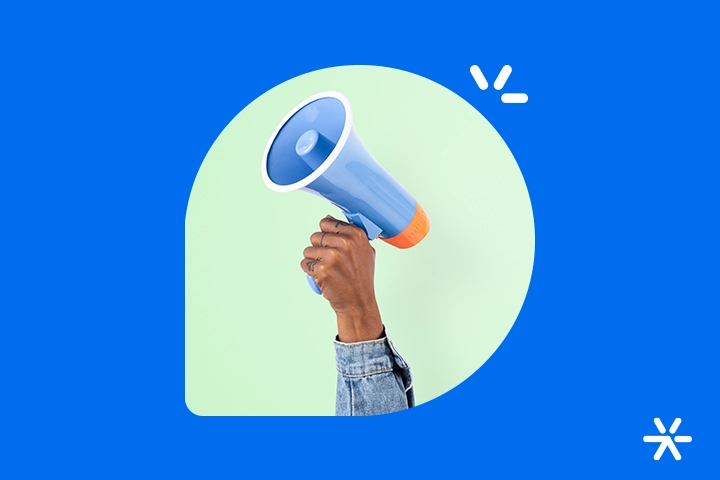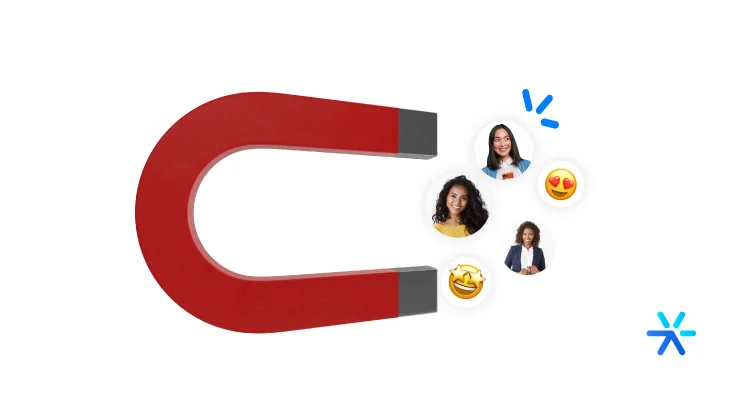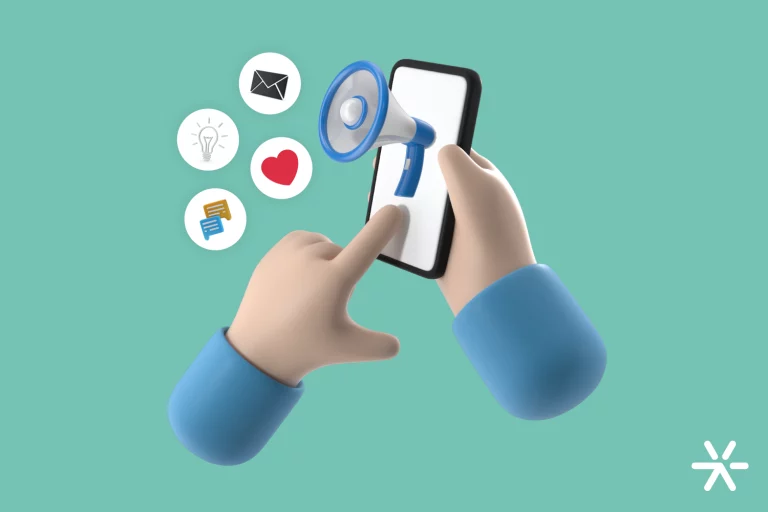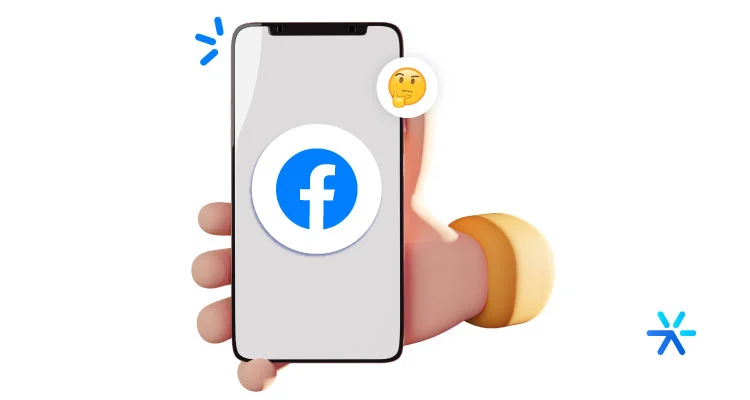Inbound or Outbound: What’s the Best Strategy to Sell?
Complex sales, such as B2B transactions, require attracting the right audience to be successful.
Investments in marketing amplify sales outcomes by supporting the commercial department in generating qualified contacts and business opportunities.
Among the various strategies available, Inbound and Outbound Marketing stand out and are widely adopted across different industries.
These methodologies can help you attract traffic, generate leads, and enhance your company’s results.
Let’s delve into the differences between these two approaches to determine which best suits your objectives.
What Is Inbound Marketing?

Inbound Marketing, also known as Attraction Marketing, is a methodology designed to draw potential consumers by offering relevant content tailored to the brand’s personas.
Instead of interrupting content, as traditional marketing does, Inbound Marketing aims to be the content itself.
How Does the Inbound Process Work?
The goal of Inbound Marketing is to attract visitors and generate leads by providing valuable content. This approach fosters relationships, nurtures leads, and qualifies them, guiding them through the sales funnel.
In this process, the brand positions itself as a problem-solver, identifying qualified leads or opportunities that can lead to sales.
Contacts most likely to make a purchase and show significant interest in the offered solution are then handed over to the sales team.
Who Is Inbound Marketing Recommended For?
Given its focus on the online environment, Inbound Marketing is particularly beneficial for companies with limited marketing budgets.
According to HubSpot, Inbound can be up to 62% less expensive than Outbound Marketing and offers a long-term ROI of 275%.
This strategy is also ideal for those who require easily measurable metrics and have more time to see results.
Additionally, if a brand has numerous unqualified contacts, Inbound can effectively nurture and qualify these leads.
Examples of Inbound Marketing Actions
Inbound Marketing can be implemented through various actions and channels, considering all stages of the consumer’s sales journey:
- SEO: Employing techniques to optimize website structure and content, enhancing visibility in search engine results and driving organic traffic.
- Blogs: Creating articles to showcase the brand’s expertise, spark interest in relevant topics, and leverage organic search for traffic generation.
- Rich Materials: Offering in-depth resources like e-books, infographics, videos, webinars, spreadsheets, calculators, demos, and free trials to educate leads and guide them through the sales funnel.
- Social Media: Utilizing platforms to create and share content, as well as distribute blog posts and rich materials.
- Email Marketing: Engaging existing contacts with tailored materials and offers, and establishing nurturing flows to guide new leads through the sales funnel.
You might also like – 7 Steps to Create an Email Marketing Strategy That Converts
What Is Outbound Marketing?

Outbound Marketing, or Interruption Marketing, is a traditional approach where brands proactively reach out to potential customers through direct messages.
This method includes advertisements on radio, TV, billboards, and print materials.
With the advent of digital marketing, Outbound strategies have expanded to include various online formats and tools.
How Does the Outbound Process Work?
Outbound Marketing aims to generate revenue and scale businesses quickly by presenting brand solutions to a broad audience.
It’s also effective for prospecting clients in specific niches or situations where the audience aligns with the offered solutions.
In this process, the sales team plays an active role, requiring a robust team dedicated to lead qualification and client prospecting.
🔎Read also: What is Performance Marketing, How to Use It, and 6 Examples
Who Is Outbound Marketing Recommended For?
Companies seeking rapid results and willing to invest heavily in marketing may find Outbound strategies advantageous.
This approach is also suitable for businesses aiming to generate leads who are closer to making a purchase decision.
However, it’s important to note that Outbound Marketing demands a larger sales team to actively prospect and follow up with generated contacts.
Examples of Outbound Marketing Actions
Outbound Marketing encompasses various strategies and actions, including:
- Paid Media: Traditional advertising through radio, TV, billboards, magazines, newspapers, as well as online paid traffic via social media campaigns, sponsored links, and display networks.
- Commercial Prospecting: Actively identifying and reaching out to potential clients who fit the ideal customer profile, accelerating the sales cycle and generating business opportunities.
- Cold Calling: Making unsolicited calls to potential clients to establish personal contact and expedite lead qualification. Despite being a traditional method, it’s still effective; 54% of buyers reported that their last purchase meeting was scheduled through a phone call.
- Social Selling: Leveraging social media platforms to connect with potential consumers through individual interactions and targeted advertisements.
- Outbound Email: Also known as cold emailing, this method involves sending unsolicited emails to potential clients to build relationships, spark interest, and generate business opportunities, primarily through meeting scheduling and follow-ups.

Inbound or Outbound Marketing: Which Is Better for B2B Lead Generation?
Deciding between Inbound and Outbound Marketing isn’t straightforward.
It’s essential to consider factors such as available time, target audience profile, investment timing, defined lead and sales generation goals, desired ROI, and available marketing methods.
Importantly, combining both methodologies can yield the best results.
They complement each other effectively.
For instance, companies like RD Station, a marketing automation platform, and Pantys, a brand specializing in feminine products, successfully integrate Inbound and Outbound strategies. They invest in qualified content, lead nurturing, and close customer relationships, alongside paid media and active prospecting.
By leveraging the strengths of both approaches, businesses can create a comprehensive marketing strategy that drives sustainable growth.
In the B2B sector, another strategy gaining traction is Account-Based Marketing (ABM)—a tactic that, in a way, combines both inbound and outbound approaches.
This strategy works by selecting specific accounts (target companies) and directing focused marketing and sales efforts toward converting these business opportunities.
Campaigns are crafted for each of these targets in an extremely personalized manner.
🔎 Read more – 13 Key Differences Between B2B and B2C Sales and How to Optimize Your Strategy
Trade shows and events also fall somewhere in between since they require active effort to be where the customers are—but brands must stand out in the crowd with creativity and compelling content to attract potential clients.
How to Use Inbound or Outbound in Different Segments?

Wondering how to decide which strategy to use? It’s simple: go by your market segment.
Below are five different segments where you can apply inbound, outbound, or even both together.
Let’s go!
B2C E-commerce
For B2C e-commerce, it’s ideal to use a bit of both.
Inbound marketing is perfect for creating high-quality content like blogs, webinars, and live videos that help educate consumers.
It also involves leveraging social media and other platforms to boost brand visibility and build a strong community of loyal followers.
Meanwhile, outbound marketing focuses on targeting potential consumers through paid ads—whether on social media or search engines.
You can also make use of email marketing and SMS to promote special offers and sales.
Service Companies
If you’re a service provider, like a travel agency or SaaS company, you can—and should—use both inbound and outbound strategies.
That said, the emphasis will likely lean more toward inbound.
Inbound marketing strategies center around creating educational and informative content to attract customers interested in topics related to travel, for example.
Often, your audience will be at the beginning of their search for a product or service—so it’s your job to educate them and take the opportunity to introduce your business.
On the outbound side, you can use cold emails and cold calls—especially for those engaging with your content—to prospect clients and present your solutions.
Industries
Once again, you’ll find a mix of strategies at play here.
Inbound marketing creates relevant and optimized content for your target audience and shares it via social media and blogs to drive organic traffic.
Outbound marketing handles telesales and direct mail campaigns to showcase your company’s solutions to potential customers.
In short: one educates and prepares the audience, the other strengthens the relationship to drive purchases.
Schools
This sector varies. If your institution is a local neighborhood school, it’s best to focus more on outbound marketing.
In that case, go with banners around town, billboards, and even local radio or TV ads. Think of it as speaking directly to a targeted group of people who are likely interested.
Now, if you’re a chain of schools or offer distance learning, it’s important to also invest in inbound marketing to educate your audience—but always keep a foot in outbound efforts.
🔎 Read also: Digital Marketing for Beginners: 15 Tips and 6 Tools
Physical Retail
Lastly, physical retail tends to lean more toward outbound marketing, especially for independent shops rather than retail chains.
That doesn’t mean inbound is off the table—far from it.
Outbound can involve traditional media like radio and newspapers to reach a broader audience and boost store visibility.
Inbound marketing, meanwhile, will focus on content strategies to educate customers about the store’s products—especially via social media.
How to Combine Inbound and Outbound Marketing

As shown in the examples above, inbound and outbound often work best together, complementing each other.
So now, let’s explore how to execute joint actions effectively.
Check it out!
Organic Traffic + Paid Traffic
If you want greater visibility and more leads, it’s essential to invest in both organic traffic (inbound) and paid traffic (outbound).
Organic traffic is driven by the production of relevant content and SEO optimization, while paid traffic comes from ad campaigns on social networks and search engines.
Combining these two strategies gives you the perfect formula.
Organic traffic builds and optimizes your content for search engines, while paid traffic gives you that extra push to increase visibility and drive traffic to specific pages or your site.
Cold Calling + Lead Generation
Yes, you can confidently use cold calling (outbound)—especially when paired with inbound lead generation strategies.
Cold calling involves making unsolicited calls to prospect potential clients. Lead generation, on the other hand, is about attracting clients by offering relevant, engaging content.
By combining both, you use cold calling to contact leads you’ve already captured.
In other words, you present your company and products/services in a personalized way—because you already have the user’s data.
🔎 Read also: How to Generate and Convert Sales Leads More Effectively
TV Commercials + Content Marketing
Yes, TV commercials still work—and if you pair them with content marketing, the results can be impressive!
TV ads help reach a broad audience and raise brand awareness. Content marketing, meanwhile, nurtures the visitors brought in by the commercial.
It provides valuable, educational information about your products or services to build a closer, longer-lasting relationship.
Billboards + Social Media
One of the most powerful combos you can use is billboards (outbound) and social media (inbound).
The billboard grabs attention—and the people who see it continue the brand experience on social media.
Include a link to your brand’s social platform on the billboard so consumers can follow it—then engage them with content, promotions, and exclusive messages.
Tip: Use a free QR Code!
Event Booth + Live Social Media Coverage
Finally, let’s look at combining event booths (outbound) with live social media coverage.
This model has grown rapidly—especially post-pandemic.
The booth helps prospect leads and increases brand exposure, while live social media coverage shares the event’s highlights, generating interest and engagement.
Did you enjoy the content in this article?
Share your experiences and results with each of these methodologies in the comments!








